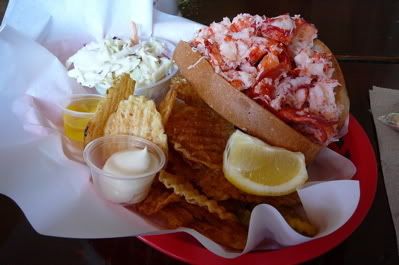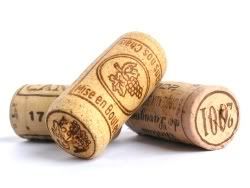Recently I was asked to speak at Copia’s Women in Wine symposium as I guess I’m considered to be a person with a few pearls of wisdom after 23 years in the wine business. The copy for the seminar said, “Hear fresh perspectives from the new generation and pearls of wisdom from the vintage gals” (I paraphrase). I loved that now at 44 I’m considered a vet. Ha! I certainly feel that way given the long and winding road of experience, travel, learnings, but one thing I shared with the group at hand that has kept my perspective fresh is curiosity and a sense of keeping a pulse on what’s next. What I loved about the gathering was that it encompassed two generations of women who had witnessed in their collective time a very exciting evolution for women in the business. Notable take aways from the seminar included acknowledging an increasing number of women in various wine industry positions from winery CEO to winemaker to marketer across the entire gamut. Those who helped pave the way such as Domaine Carneros winemaker Eileen Crane, St. Supery CEO Michaela Rodeno, Zelma Long among many others spoke of the novelty of taking on winemaking and senior positions in the 1970s and of the societal limitations they sometimes faced but overcame. I love to listen to pioneers talk because it really was unknown territory and it takes guts to navigate it guided by your instinct and talent. There are still challenges out there for younger people in the wine business, but it’s really important to acknowledge that they are standing on the shoulders of those who went before, and they will have their own unique challenges. Another person who presented a more contemporary perspective on the industry (as it relates to hospitality) was Shelley Lindgren of A16, she’s a wunderkind. I’ve always marveled at Shelley’s grace and determination wrapped in such a cool package. For someone so young she knows a lot about human nature, and is really working to break the stereotypes in the restaurant business of hard work, suffering and sacrifice and an intense hierarchy in most kitchens, she makes a very demanding job fun and really empowers her staff from the dishwasher to the top chef. She sets a high bar but gently guides everyone to understand her goals, I love it when young people show such wisdom and enthusiasm not to mention a strong work ethic. One thing Shelley said that I subscribe to is that there isn’t a substitute for putting in the time and work to build a body of knowledge: no shortcuts. Amen I say! From the start of my career with my serendipitous job as a wine steward at the Key Bridge Marriott in Arlington, VA across from my alma mater Georgetown to great stints with Kobrand Corporation in New York, E. & J. Gallo in California and finally my own agency, it’s been an incredible opportunity to watch the U.S. and the globe become more wine savvy and curious. Also, to be in the business and have it be experiencing an all time growth is really truly amazing and gratifying to those who have worked to bring the incredible richness and lore of wine to more people! If we continue to listen to consumers and ask questions, we can’t help but all benefit.
Facebooking Foodies
I could never be a celebrity. Ever-present paparazzi lurking in my bushes and fabricated headlines about my latest breakup stand against my idea of a quiet, private lifestyle. So, I was hesitant joining the booming, online community of Facebook. It seemed to have a similar sense of putting your life on display for the world (not to mention the dread of some high school boyfriend whose name might appear in my inbox some random morning). In a day and age where people are Googling everyone they meet, I was nervous at the thought of people finding me online. Keep it simple, I told myself. I dove in; listing only my basic interests, and filtering only friends who wouldn’t embarrass me should a future employer tag me on the site. Friends came out of the woodwork, from old college pals to friends-of-friends living on the east coast, I reconnected and created a virtual network of amigos. Then something curious happened, perfect strangers began sending me messages. Now, if you’re new to Facebook, or have yet to explore it, the system allows you to search for people using key words, network associations, name, groups, or interests. One message was from a girl who joined a San Francisco-based food and wine group, which seemed to include almost 200 other like-minded foodies. I too had joined this group, but neither of us had yet to receive even a single invitation to join anyone for a night of chowing and imbibing the Bay Area’s finest food and wine. My new, virtual friend, Yumi, had taken matters into her own hands pulling people from the group of similar age and interests. She, like the rest of us, was ready to hit the San Francisco food and wine scene and make new friends in the process. Once she gathered around a dozen gals, she sent her first invitation for a night of nibbling and sampling wines from around the world at the Market Street wine bar, CAV. The first turnout was small, just five of us, but we were able to sample some velvety French Burgundy, a fabulous cheese plate, a spicy sausage dish, and a just-in-season pumpkin cheesecake.
Since the first meeting, there have been meet-ups at venues across the city from the hot happy-hour spot Americano to the San Francisco Opera and Friday Nights at De Young. We share details of our lives, smile for photos, and swap tales through our online meeting source, Facebook. Our little group, the spin-off of the larger one, even has a name, though we’re trying to keep it an intimate group to avoid the same problem we encountered with the larger one. Still feeling like somewhat of a newbie to the San Francisco scene, I’m getting over my fears of putting myself out there, even if it is online. Facebook is allowing me to combine some of my favorite things, trying great wines, eating delicious, fresh foods, and socializing with new faces. I may not be a celebrity, but I guess putting yourself out there isn’t so bad after all.
O-Ya
There’s been a lot of buzz lately about a dark sliver of a Japanese restaurant called O-Ya, and a recent visit confirmed that with this one, you’ve gotta believe the hype. I had read reviews from what I thought were fanatical diners who would go in once, then cancel reservations at another restaurant for the following night and return, less than 24 hours after paying the tab, right back to O-Ya. But it's really that good. Just a short walk from South Station in what’s known as the Leather District, O-Ya is run by a husband and wife team: he’s the chef, she’s the sake sommelier. Both logged time in Japan and he seemed to have soaked up that country’s affinity for food that has a perfect mixture of precision, elegance, funk and delight and she is well steeped in sake knowledge as the list features selections that stumped and delighted my sake-knowing dining companion. (There’s a great wine list as well, but the sake feels like the When in Rome... thing to do).
The menu is long but enthralling, and it's based on the omikase style of dining. It consists of myriad small plates, each a little universe unto itself. I won’t discuss specific dishes because half the fun is discovering the menu for yourself. The owners told me diners take the paper menus home and bring them back on future visits in order to eat the dishes still untried. It’s like a dreamy gustatory to-do list.
The preparation of the dishes, the creativity, attention to minute detail, and an utter refusal to rush any part of the cooking process (something you don’t often see in the States) all add up to what has been my most dazzling meal of the year. I can’t wait to go back and then go back the next night.
O-Ya 9 East St Boston, MA 02111 (617) 654-9900
Tour de France Tasting Tour
World-class cycling and wine-growing are two badges of honor for the French, as they are both part of the country’s identity. In fact, in days of old, riders of the Tour de France were provided with wine along the grand route to ‘nourish’ them and keep their spirits up during the grueling three weeks of riding. With the Tour de France well underway this year, we have been recalling a great visit to France for the Tour in 2002. While following in the mountain stages in the Alps and Lance Armstrong’s fourth Tour victory after a time trial win in Macon, we were fortunate enough to experience the local wines in each region. Whether enjoying a five course meal with a notable bottle Chignin-Bergeron from the Haute Savoie region by the Lac d’Annecy or sipping on a bottle of Macon-Villages table wine with local cheeses and meats on a baguette along the course, the wines of France added to our festivities as well as our cultural education along the way. What we have discovered in the years since is that the Tour makes for some great wine-tasting, even from our home here in the States. A wine map of France coupled with a map of the Tour makes for an easy guide to tasting your way along the Tour, a truly fun way to stretch your knowledge of French wines and introduce your palette to some new favorites.
For example, this year’s Tour began in England, one of the top countries to import French wines. After a time trial in London and the first road stage to Canterbury, the Tour moved to the European continent to begin a clock-wise tour of France. The cold weather wine-producing areas were the first on this year’s Tour, with an early stage from Belgium through the Champagne region, home to world renowned sparkling wines made from Pinot Noir and Chardonnay grapes. Riders then cycled through Chablis and the heart of the Burgundy region, known for both whites and red wines, also made with the above noted grapes. The TV race commentators even referenced team celebration of a stage win with a great bottle of local Chablis.
From Burgundy, the Tour heads to the Alps, and then on to the southern climes with the Cotes du Rhone region’s reds made from Syrah and Grenache grapes, front and center, followed by the reds and whites of Languedoc-Rousillon on the Mediterranean Sea, featuring Merlot, Cabernet Sauvignon, Sauvignon Blanc and Chardonnay grapes. As the Tour heads north toward Paris, riders will skirt the Bordeaux region adding Cabernet Franc and Semillon to the list. Once back in the summer heat of Paris, riders and spectators will no doubt enjoy some of the famous white wines of both the Loire Valley, Sauvignon Blanc and Chenin Blanc, and Alsace Riesling, Pinot Blanc and Gewurztraminer, even though these wine-growing areas of France were not included in this year’s Tour.
So, go visit the French section of your local wine shop, armed with a map of the Tour de France (www.letour.com), and you too can enjoy these famous old world wines. Just don’t drink and ride!
Hats off to the All American 'Lob-stah Roll'!

As you disembark the plane at Boston’s Logan International you can feel your mouth salivating for one of Massachusetts’ famed lobster rolls, or in the native tongue of a true Bostonian “Lob-stah” roll.
After years of following my husband’s lead to find the perfect hot dog (which of course, would be the original Gray’s Papaya, it’s all in the bun), we decided that the culinary focus of this vacation would be to find the perfect lobster roll in and around Cape Cod. Or at least we would master how to make the perfect lobster roll

We had our long standing favorite lobster roll from the reliable Squire in quaint (and preppy) Chatham. Side track: Chatham is the quintessential Cape Cod town with its white picket fences, bandstands, some kitschy galleries and lot of gingham and madras patterns on the natives. But I digress, back to the lobster roll quest. The lobster roll at the Squire does not try to be anything more than a simple lunch item, albeit expensive. It is served on a plastic basket lined with wax paper with chips on the side. The soft hot dog bun has uncrusted sides, traditionally you are supposed to butter and toast the side of the bun but I tend to think it ruins the succulent taste of the lobster meat. The Squire seems to agree and they too leave the bun untoasted. As for the lobster meat, they have nice chunks of lobster with about two tablespoons of mayonnaise combined with some chopped celery and salt and pepper. So simple but so good but NOT a “cheap eat” at $17.95. I’d like to see Rachael Ray try to eat her way through the Cape on $40 a day! Obviously we had to have a point of comparison so we tried a couple more rolls on the Cape. Cook’s in Orleans, another Cape town just 5 minutes from beautiful Nauset Beach, is far more traditional. Traditional in this sense means grease and fried bread. Not my style, however the lobster was excellent but I found the combination with the grilled buttered bun to ruin the delicate lobster flavors. A little cheaper than the Squire at $14.95.
To be honest, I was a little disappointed in some of the other rolls that were either grilled with butter or the soft bun quickly became soggy from too much mayo. By the way, this is one of the major reason restaurants grill the bun. With that said, I decided it was my turn to attempt a version of the lobster roll. For a first try, it wasn’t bad and I added a secret ingredient (cayenne). Here’s my recipe for 2 lunch sized lobster rolls.
Ingredients: - 2 lobster tails (the best meat) not cut but torn into bite size pieces - 1 stick of celery finely chopped - 3 tbs canola mayonnaise (it’s better for you) - Pinch of Cayenne - Squeeze of one lemon - Pinch of Maldon salt and freshly ground black pepper - 2 Fresh hot dog buns with uncrusted sides
Directions: To make the lobster salad combine the bite size lobster pieces, celery, mayonnaise, cayenne, lemon, salt and pepper. Refrigerate for 2 hours. When ready, place lobster mixture in soft bun and serve with cracked pepper. For garnish, place on white plate with salt and vinegar potato chips and celery sticks.
Cork and Sustainability

I was recently at a dinner and the topic of conversation turned to cork, my good friend made a statement about the wine we were drinking, which happened to have a plastic “cork” stopper. She proceeded to tell the table that the wine industry has begun to move away from cork, embracing other methods such as plastic or screw cap enclosures, and that this was in fact a more “green” method. But is it really?
Well, I have to admit I was somewhat surprised myself to discover that cork harvesting is actually a very sustainable practice. Through a little bit of research I found that cork is both renewable and biodegradable. Almost nothing is wasted - each part of the cork tree serves an ecological or economic purpose. Cork trees are one of the few trees that can live without their bark, since the trees have two layers of bark, and the outside layer can be removed without hurting the tree just as long as the inner layer is not penetrated. Furthermore, since the trees are not cut down during the process of harvesting, they maintain the soil and prevent erosion from occurring.
Harvesting cork is an age-old practice that not only keeps the cork oak trees alive, it provides jobs for people and homes for several endangered species such as the Bonelli’s eagle, the Iberian lynx, the azure-winged magpie, and the Barbary deer. To protect these animals from losing their delicate ecosystems, consumers should remember to always try and buy cork, especially since wine-bottle closures account for almost 70 per cent of the cork market!
I guess you can say you are really drinking for a cause





